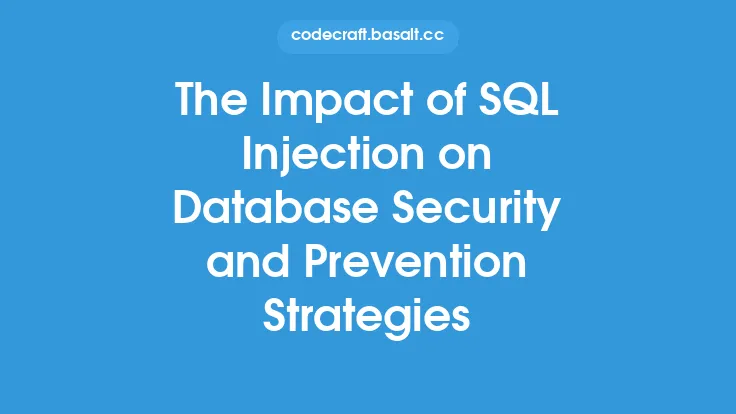In the realm of operating systems, process management is a critical component that ensures the efficient execution of multiple processes in a shared resource environment. One of the key challenges in process management is dealing with deadlocks, which can bring the entire system to a grinding halt. A deadlock is a situation where two or more processes are unable to proceed because each is waiting for the other to release a resource. In this article, we will delve into the techniques used to prevent and avoid deadlocks, which are essential for maintaining system stability and performance.
Introduction to Deadlocks
A deadlock is a circular wait condition where a set of processes are blocked, each waiting for a resource held by another process in the set. For a deadlock to occur, four necessary conditions must be met: mutual exclusion, hold and wait, no preemption, and circular wait. Mutual exclusion means that a resource can only be used by one process at a time. Hold and wait refers to the situation where a process is holding a resource and waiting for another resource. No preemption means that the operating system is not allowed to preempt one process and give the resource to another process. Finally, circular wait occurs when a process is waiting for a resource held by another process, which is also waiting for a resource held by the first process.
Deadlock Prevention Techniques
Deadlock prevention techniques are used to ensure that at least one of the necessary conditions for a deadlock is not met. One way to prevent deadlocks is to eliminate the mutual exclusion condition by allowing multiple processes to share a resource. However, this is not always possible, especially for resources that are inherently exclusive, such as a printer. Another approach is to eliminate the hold and wait condition by requiring a process to request all the resources it needs at once. This can be achieved through resource ordering, where resources are ordered in a linear sequence, and a process can only request resources in that order. No preemption can be eliminated by allowing the operating system to preempt one process and give the resource to another process. Finally, circular wait can be eliminated by ordering resources in a way that avoids circular waits.
Deadlock Avoidance Techniques
Deadlock avoidance techniques are used to avoid deadlocks by carefully managing the allocation of resources. One popular approach is the Banker's Algorithm, which tests for safety by simulating the allocation of resources to processes. The algorithm works by maintaining a table of available resources and a table of allocated resources for each process. When a process requests a resource, the algorithm checks if the request can be satisfied without leading to a deadlock. If the request can be satisfied, the algorithm allocates the resource and updates the tables. If the request cannot be satisfied, the algorithm delays the request until it can be satisfied. Another approach is to use a resource ordering algorithm, which orders resources in a way that avoids deadlocks.
Resource Ordering Algorithms
Resource ordering algorithms are used to order resources in a way that avoids deadlocks. One popular approach is the "resource ordering with abstraction" algorithm, which orders resources based on their abstract properties. For example, resources can be ordered based on their type, such as I/O devices or memory. Another approach is the "resource ordering with priorities" algorithm, which orders resources based on their priority. For example, resources can be ordered based on their priority, with high-priority resources allocated first.
Avoidance Algorithms
Avoidance algorithms are used to avoid deadlocks by carefully managing the allocation of resources. One popular approach is the "first-come-first-served" algorithm, which allocates resources to processes in the order they are requested. Another approach is the "shortest job first" algorithm, which allocates resources to the process with the shortest execution time. Avoidance algorithms can be used in conjunction with resource ordering algorithms to provide a comprehensive deadlock avoidance strategy.
Comparison of Deadlock Prevention and Avoidance Techniques
Deadlock prevention and avoidance techniques have their own strengths and weaknesses. Deadlock prevention techniques are simpler to implement but may be less efficient, as they may require processes to request all resources at once. Deadlock avoidance techniques, on the other hand, are more complex to implement but can be more efficient, as they can allocate resources dynamically. The choice of technique depends on the specific requirements of the system and the trade-offs between simplicity, efficiency, and complexity.
Implementation of Deadlock Prevention and Avoidance Techniques
The implementation of deadlock prevention and avoidance techniques depends on the specific operating system and hardware architecture. In general, deadlock prevention and avoidance techniques are implemented in the kernel of the operating system, which manages the allocation of resources to processes. The kernel maintains tables of available resources and allocated resources for each process and uses algorithms to manage the allocation of resources. The implementation of deadlock prevention and avoidance techniques requires careful consideration of the trade-offs between simplicity, efficiency, and complexity, as well as the specific requirements of the system.
Conclusion
In conclusion, deadlock prevention and avoidance techniques are essential for maintaining system stability and performance in operating systems. By understanding the necessary conditions for deadlocks and using techniques such as resource ordering, avoidance algorithms, and deadlock prevention, operating systems can avoid deadlocks and ensure the efficient execution of multiple processes in a shared resource environment. The choice of technique depends on the specific requirements of the system and the trade-offs between simplicity, efficiency, and complexity. By carefully managing the allocation of resources, operating systems can prevent deadlocks and provide a stable and efficient environment for process execution.





